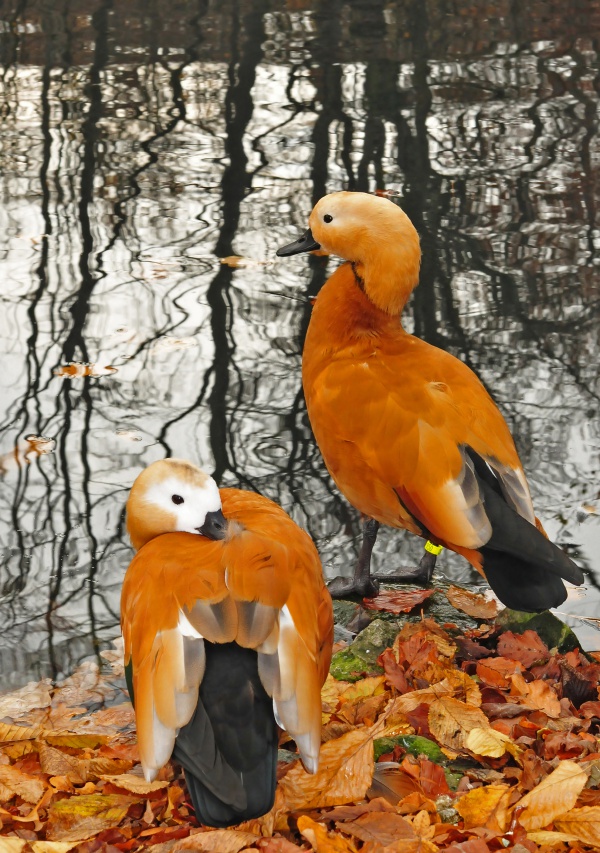Facts About Ruddy shelduck
The Ruddy Shelduck, also known in India as the Brahminy Duck, is a striking waterfowl belonging to the Anatidae family. With its vibrant orange-brown plumage, black tail and flight feathers, and white wing-coverts, it is easily recognizable. This migratory bird winters in the Indian subcontinent and returns to southeastern Europe and Central Asia for breeding. These ducks form strong pair bonds, nest away from water, and carefully nurture their young, who are ready to fly around eight weeks after hatching. While their populations are stable or even increasing in Central and Eastern Asia, they are unfortunately declining in Europe.
Scientifically, the Ruddy Shelduck is known as *Tadorna ferruginea*. First described by Peter Simon Pallas in 1764, it is closely related to the South African Shelduck. The genus name "Tadorna" derives from the French word for common shelduck, and "ferruginea" refers to its rusty-colored plumage.
These ducks have a broad range, breeding from Southeast Europe to Western China, and wintering in the Indian subcontinent. In India, they are common winter visitors and can be found in habitats such as lakes, reservoirs, rivers, and wetlands. They are omnivorous, consuming both plants and small invertebrates, and are predominantly nocturnal.
Behaviorally, Ruddy Shelducks are usually observed in pairs or small groups, rarely forming large flocks. They exhibit aggressive behavior during the breeding season and prefer nesting in locations away from water. They are currently listed as "Least Concern" in terms of conservation status, with an estimated global population of 170,000 to 225,000 individuals.
The Ruddy Shelduck’s adaptability to various habitats and stable populations in certain regions help maintain its conservation status. Although they face threats in Europe from habitat loss and hunting, they are protected across Central and Eastern Asia, where they hold cultural significance and are considered sacred by Buddhists.

 China
China